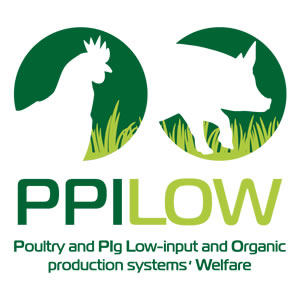WP5: The best of both worlds – dual-purpose genotypes for organic agriculture
WP5: The best of both worlds – dual-purpose genotypes for organic agriculture – by Lisa Baldinger (Thuenen), Sanna Steenfeldt (AU), Maxime Reverchon (INRAE), Antoine Roinsard (ITAB)
While the European regulation for organic agriculture (Regulation 2018/848) encourages the choice of locally adapted breeds, so far most organic poultry farmers rely on the same genotypes as their conventional colleagues. For meat production, slow-growing broiler strains are used, with the definition of slow-growing varying between countries. In egg production, male siblings of high-performance layer hybrids are culled after hatching because of their low growth potential and meat quality. This ethically questionable practice has caused increasing public concern. Consequently, the German and French ministers for agriculture have recently declared their will to abandon the culling of day-old male layer chickens until the end of 2021. Apart from the not-yet widely practicable option of in-ovo sexing, another alternative is the use of dual-purpose genotypes. In contrast to specialized meat birds or layers, dual-purpose genotypes are characterized by a more balanced performance profile including a lower number of eggs but better fattening performance of both males and females. In order to evaluate such genotypes on a European scale, PPILOW will test three dual-purpose genotypes in three countries, namely France, Denmark and Germany. The genotypes have been selected in cooperation with breeding companies able to supply high numbers of chickens if demand increases. The comparison of their production potential under the different husbandry and feeding conditions will yield valuable information for farmers and breeders. In each country, one additional, commonly used genotype will serve as a control. Among the collected data are performance parameters such as feed consumption, weight gain and laying performance, but focus will also be put on the behaviour of the birds in the outdoor run, welfare indicators and meat and egg quality. The first female dual-purpose chickens have already been hatched and are currently being reared at Aarhus University in Denmark (see photos). They will reach maturity in April 2020, after which their laying performance will be tested. Trials in France and Germany will start in May 2020.
Fig. 1, 2 and 3 – three dual-purpose genotypes. Fig. 4 control genotype for Denmark – © Sanna Steenfeldt – AU

Figure 1

Figure 2

Figure 3

Figure 4

